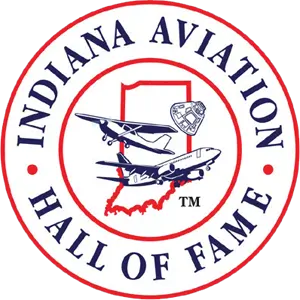
Paul Baer
Born in 1894 in Fort Wayne, Paul Baer was the fourth of four children. At 16 he left high school, headed to Detroit and the Cadillac Automotive School of Applied Mechanics. Graduation certificate in hand, he stayed two years in Detroit, fixing and selling Cadillacs. But a 1916 skirmish on the Texas – Mexican border with Pancho Villa’s gang sounded more exciting. The Indiana National guard was called up as part of 10,000 troops to be sent and capture them. Paul joined up!
Paul was a truck driver during the “Mexican Expedition.” But what truly caught his eye was the first military application of the Army’s newest machine – the observation airplanes! Leaving the Guard, he found his way to France and enlisted, February 1917 as part of the Aéronautique Militaire. Flight training began and he graduated as a pilot in June 1917. Paul Baer was promoted to the exulted rank of Corporal.
Corporal Baer’s first assignment was Escadrille SPA 80, flying SPADs. As the French decided to put all the Americans in one unit, he became part the Lafayette Escadrille! But nearly all their flying was in non-combat areas – much to the displeasure of the American pilots.
However, on the 11th of March 1918, Lt. Paul Baer, nearing the return from a patrol, encountered seven German fighters. With 10 minutes of fuel remaining, he engaged the enemy taking down an Albatross. The other six converged and –in Paul’s words– “I did some scientific retreating!” Paul was now a fighter pilot!
The next morning, in that same area, he got his second victory–although his letters indicate he thought he had downed a total of four. “Scientific retreating” took place again, bringing home a number of extra enemy bullets in his plane.
In the next six weeks, Lt. Paul Bear, found his skill at dogfighting, with five confirmed and four unconfirmed victories. He was now Americas’ first Ace!
With 227 combat hours—and nine confirmed victories—the French awarded him the Crox de Guerre and the Legion of Honor. America presented the Distinguished Service Cross. Paul Baer was the first aviator to receive that award.
Baer shot down his 18th enemy airplane on May 22, 1918. On that day, while once again outnumbered by enemies and aiding a comrade, Baer himself was shot down. Seriously injured, he was captured and held as a prisoner of war until the Armistice.
Paul Baer returned to the United States after the war and continued to fly in various capacities. He flew as a test pilot for Ford Motor Company, surveyed airports in South America for Pan American, and was an aeronautical inspector for the U.S. Department of Commerce.
In 1930, Paul Baer became a pilot for the China National Aviation Corporation. He was flying from Nanking to Shanghai on On December 9, 1930. During a river take off, his airplane struck the mast of a junk on the Huanpu River, and crashed, killing three of the seven people on board. Paul Baer was one of those three.
In 1925 a new airport was opened in Fort Wayne and named Paul Baer Municipal Airport. During World War II, the airport was taken over by the military and designated Baer Army Airfield. It is now Fort Wayne International Airport (FWA).
